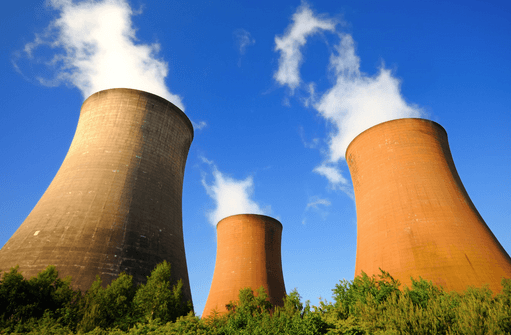Greenhouse gas concentrations hit record high
 Concentrations of atmospheric carbon dioxide (CO2) increased at “record-breaking” speed last year, according to the World Meteorological Organization’s (WMO) annual Greenhouse Gas Bulletin released Monday.
Concentrations of atmospheric carbon dioxide (CO2) increased at “record-breaking” speed last year, according to the World Meteorological Organization’s (WMO) annual Greenhouse Gas Bulletin released Monday.
According to the report, concentrations of CO2 reached 403.3 parts per million in 2016, up from 400.00 parts per million the year prior.
This acceleration was due to a strong El Niño event—which triggered droughts and reduced the capacity of forests, vegetation and the oceans to absorb CO2—as well as human activities, such as the burning of fossil fuels.
“The last time the Earth experienced a comparable concentration of CO2 was 3-5 million years ago, the temperature was 2-3°C warmer and sea level was 10-20 meters higher than now,” a press release for the bulletin stated.
“Concentrations of CO2 are now 145% of pre-industrial (before 1750) levels.”
Methane and nitrous oxide—the two other main greenhouse gases—also hit record levels in 2016.
“Population growth, intensified agricultural practices, increases in land use and deforestation, industrialization and associated energy use from fossil fuel sources have all contributed to increases in concentrations of greenhouse gases in the atmosphere since the industrial era, beginning in 1750,” the release continued.
This rapid surge in greenhouse gases could trigger unprecedented climate change and lead to “severe ecological and economic disruptions,” the report said.
In light of the bulletin, WMO Secretary-General Petteri Taalas called on international governments to drastically reduce greenhouse gas emissions.
“Without rapid cuts in CO2 and other greenhouse gas emissions, we will be heading for dangerous temperature increases by the end of this century, well above the target set by the Paris climate change agreement. Future generations will inherit a much more inhospitable planet,” said Taalas.
“CO2 remains in the atmosphere for hundreds of years and in the oceans for even longer. The laws of physics mean that we face a much hotter, more extreme climate in the future. There is currently no magic wand to remove this CO2 from the atmosphere.”
The WMO report comes before the United Nations Environment Program releases its separate Emissions Gap Report on Oct. 31, which tracks the policy commitments made by countries to reduce emissions and how these policies compare to the goals set by the United Nations Framework Convention on Climate Change (UNFCCC).
Last year’s UN Environment report had already urged the world to “urgently and dramatically” cut a further 25 percent from predicted 2030 emissions to minimize dangerous climate change. That’s not to mention that the world’s efforts to curb climate emissions have been drastically impinged by President Donald Trump’s controversial decision to withdraw the U.S.—one of the planet’s largest single emitters of greenhouse gases—from the Paris agreement.
“The numbers don’t lie. We are still emitting far too much and this needs to be reversed,” Erik Solheim, the head of the United Nations’ environment program, said. “The last few years have seen enormous uptake of renewable energy, but we must now redouble our efforts to ensure these new low-carbon technologies are able to thrive. We have many of the solutions already to address this challenge. What we need now is global political will and a new sense of urgency.”
Here are the key findings of the Greenhouse Gas Bulletin:
Carbon dioxide: CO2 is by far the most important anthropogenic long-lived greenhouse gas. Globally averaged concentrations for CO2 reached 403.3 parts per million in 2016, up from 400.00 ppm in 2015. This record annual increase of 3.3 ppm was partly due to the strong 2015/2016 El Niño, which triggered droughts in tropical regions and reduced the capacity of “sinks” like forests, vegetation and the oceans to absorb CO2. Concentrations of CO2 are now 145 percent of pre-industrial (before 1750) levels.
The rate of increase of atmospheric CO2 over the past 70 years is nearly 100 times larger than that at the end of the last ice age. As far as direct and proxy observations can tell, such abrupt changes in the atmospheric levels of CO2 have never before been seen.
Over the last 800 000 years, pre-industrial atmospheric CO2 content remained below 280 ppm, but it has now risen to the 2016 global average of 403.3 ppm.
From the most-recent high-resolution reconstructions from ice cores, it is possible to observe that changes in CO2 have never been as fast as in the past 150 years. The natural ice-age changes in CO2 have always preceded corresponding temperature changes.
Geological records show that the current levels of CO2 correspond to an “equilibrium” climate last observed in the mid-Pliocene (3–5 million years ago), a climate that was 2–3 °C warmer, where the Greenland and West Antarctic ice sheets melted and even some of the East Antarctic ice was lost, leading to sea levels that were 10–20 meters higher than those today.
Methane: Methane (CH4) is the second most important long-lived greenhouse gas and contributes about 17 percent of radiative forcing. Approximately 40 percent of methane is emitted into the atmosphere by natural sources (e.g., wetlands and termites), and about 60 percent comes from human activities like cattle breeding, rice agriculture, fossil fuel exploitation, landfills and biomass burning.
Atmospheric methane reached a new high of about 1,853 parts per billion (ppb) in 2016 and is now 257 percent of the pre-industrial level.
Nitrous Oxide: Nitrous oxide (N2O) is emitted into the atmosphere from both natural (about 60 percent) and anthropogenic sources (approximately 40 percent), including oceans, soil, biomass burning, fertilizer use, and various industrial processes.
Its atmospheric concentration in 2016 was 328.9 parts per billion. This is 122 percent of pre-industrial levels. It also plays an important role in the destruction of the stratospheric ozone layer which protects us from the harmful ultraviolet rays of the sun. It accounts for about six percent of radiative forcing by long-lived greenhouse gases.
By Maxwell Awumah
